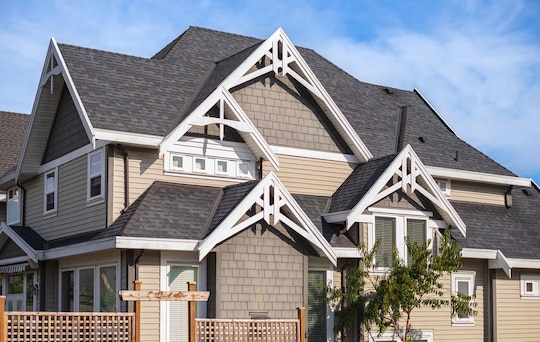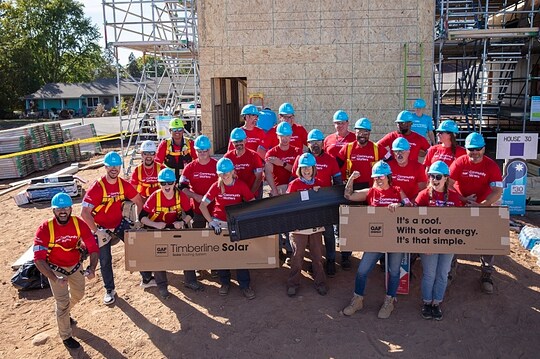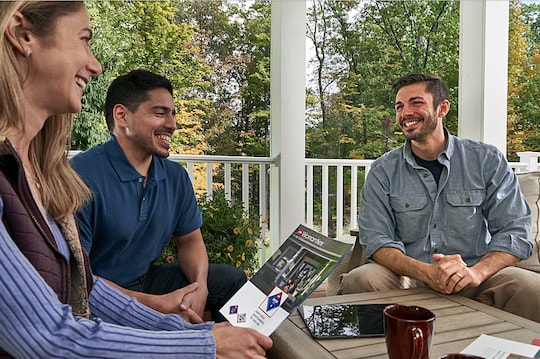
Votre maison
Tejas GAF Reflector Series: las tejas reflectantes más oscuras del mercado
La línea más nueva de tejas asfálticas reflectantes diseñadas por GAF, Timberline HDZ® Reflector Series, puede brindarle a su hogar más protección contra la intemperie y un atractivo aspecto exterior.Las tejas para techado, disponibles en elegantes colores oscuros, crean una estética atractiva que puede usarse para cumplir con ciertos requisitos de códigos relacionados con la reflectancia. Esto es particularmente importante en California, donde los códigos edilicios estatales, como el Título 24, y las normativas locales, como el Código Edilicio Ecológico del condado de Los Ángeles, requieren una reflectancia específica en los techos para ayudar a conservar energía.A continuación le mostramos lo que debe saber sobre estas nuevas tejas reflectantes, incluida su tecnología exclusiva y el potencial para permitir ahorros en costos de energía.Características de las tejas Reflector SeriesLas tejas Timberline HDZ® RS tienen varios puntos fuertes que les permiten destacarse respecto de la competencia. Gracias a su diseño, las características de las tejas de techado mejoran la reflectancia y ofrecen protección adicional contra las algas y el viento.Gránulos EcoDark®Las tejas Timberline HDZ® RS cuentan con gránulos EcoDark®, una tecnología con una nueva fórmula que ofrece colores oscuros ricos y profundos sin perder reflectancia. Entre los colores disponibles se incluye carbón, que actualmente es el color más oscuro con alta reflectancia en California, y varias otras combinaciones, cada una con un aspecto completo y dimensional.Tecnología LayerLock®Las tejas asfálticas tradicionales tienen varias capas de material conectado con adhesivo o fijadores mecánicos. Con la tecnología GAF LayerLock®, las capas de tejas se fijan mecánicamente. Esto ofrece protección adicional contra el viento, que puede desprender las tejas del techo.Gracias a la tecnología, GAF puede afirmar que es pionero en otra cosa en la industria: ofrecer una garantía sin límite de viento máximo**.Cuatro beneficios de las tejas Reflector Series para propietariosLas tejas Timberline HDZ® RS le ofrecen varios beneficios.1. Cumplimiento de los códigos y reducción del costo de refrigeraciónEn California, las tejas RS pueden usarse para cumplir los requisitos de reflectancia solar de edificios residenciales altos, según se indica en el título 24, parte 6 del Código de Regulaciones de California de 2022 y el Código de Estándares Edilicios Ecológicos del condado de Los Ángeles. Ambos códigos fijan un índice de reflectancia mínima, denominado índice reflectivo solar (SRI, solar reflective index), que mide la capacidad de un material para reflejar el sol y la luz solar. Cuanto menor sea el valor de SRI (de 0 a 100), más caliente será un material bajo la luz solar. Cuanto mayor el valor, más frío será el material.Las tejas con un SRI más alto, como GAF Timberline HDZ® RS, reflejan más luz solar, ayudan a reducir la temperatura interna y la energía (y los costos) que se necesita para refrigerar su hogar.2. Colores oscuros y ricos que combinan con cualquier estilo o estéticaYa no tendrá que elegir entre colores oscuros, ricos y profundos, populares en la arquitectura moderna, y el cumplimiento de los requisitos de reflectancia. Además de ofrecer una opción en color carbón, el color de alta reflectancia más oscuro, los otros colores de la línea cuentan con mezclas de colores GAF High Definition® que le brindan a las tejas Reflector Series un aspecto dimensional similar a las tejas de madera.3. Protección contra algas verde-azuladasLas manchas de algas verde-azuladas, una cianobacteria llamada gloeocapsa magma, pueden reducir el valor de su hogar. Las tejas HDZ® RS incluyen la tecnología contra las algas GAF Time-Release, que utiliza cápsulas especialmente diseñadas impregnadas con miles de partículas de cobre. El cobre se libera de manera uniforme a lo largo del tiempo y evita el crecimiento de las algas durante muchos años. Gracias a esta tecnología, GAF ofrece una garantía limitada de protección contra las algas StainGuard Plus™ de 25 años*, que es especialmente beneficiosa en climas cálidos, húmedos y costeros como el de California.4. Garantía contra viento sin límite máximo de velocidad de vientoCuando se instala con la cantidad requerida de accesorios del sistema de techado GAF, la tecnología LayerLock® de las tejas Timberline HDZ® Reflector Series le permite a GAF ofrecer una garantía contra viento limitada WindProven™ de 15 años** sin límite máximo de velocidad de viento.Una opción elegante para los propietarios de CaliforniaSi vive en California, las tejas GAF Timberline HDZ® RS son una opción inteligente para cumplir los estrictos requisitos de reflectancia estatales y, al mismo tiempo, seguir el sentido estético y estilístico de la arquitectura moderna. Las características de las tejas le brindan protección adicional a su hogar y pueden reducir los costos de refrigeración, algo que puede suponer un ahorro para su bolsillo.¿Está listo para obtener estos beneficios en su techo? Comuníquese con el contratista de techado certificado por GAF*** más cercano para obtener más información.*La garantía limitada StainGuard Plus™ de 25 años contra decoloración provocada por algas verde-azuladas está disponible solo en productos vendidos en paquetes que incluyen el logotipo StainGuard Plus™. *La garantía limitada StainGuard Plus PRO™ de 30 años contra decoloración provocada por algas verde-azuladas está disponible solo en productos vendidos en paquetes que incluyen el logotipo StainGuard Plus PRO™. Consulte la Garantía limitada de tejas y accesorios GAF para conocer la cobertura y las restricciones completas.**La garantía limitada contra viento WindProven™ de 15 años en tejas Timberline® HDZ™ requiere el uso de fajas iniciales GAF, protección de cubierta de techo, cumbreras para tejas y barrera contra filtraciones o ventilación de áticos. Consulte la Garantía limitada del sistema de techado GAF para conocer la cobertura y las restricciones completas. Visite gaf.com/LRS para conocer los productos GAP elegibles.***Los contratistas inscritos en programas de certificación GAF no son empleados ni agentes de GAF, que no controla ni supervisa de ningún otro modo estas empresas independientes. Los contratistas pueden recibir beneficios, como puntos de recompensa de programas de lealtad y descuentos en herramientas de marketing de GAF, por participar en el programa y ofrecer garantías mejoradas de GAF, que requieren el uso de una cantidad mínima de productos de GAF. Sus arreglos con un contratista, y todos los servicios que le pueda ofrecer, están sujetos a los Términos de uso del contratista.
Par les auteurs Dawn Killough
20 décembre 2024



